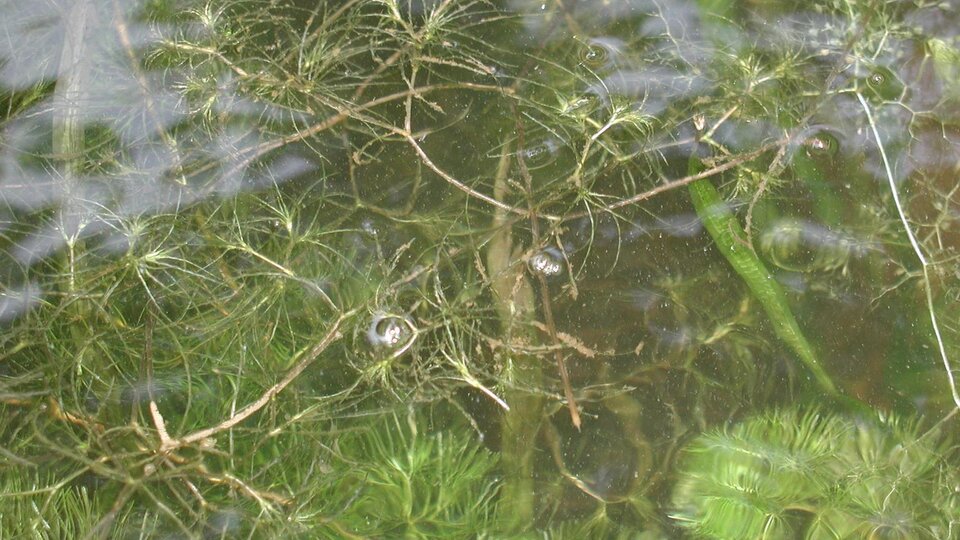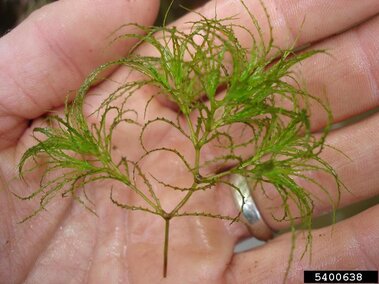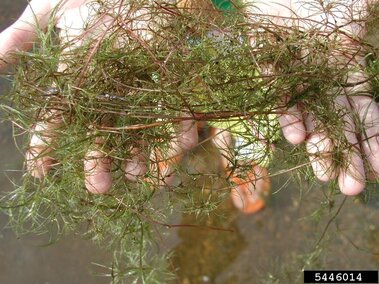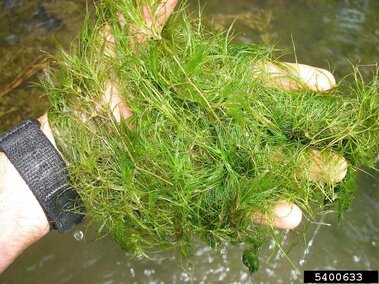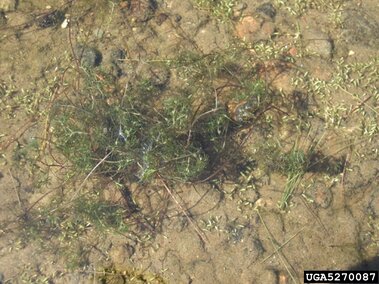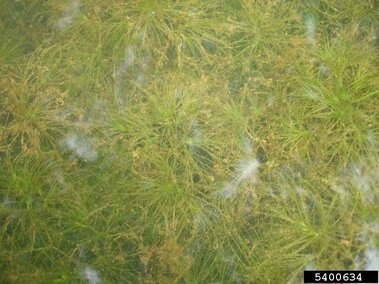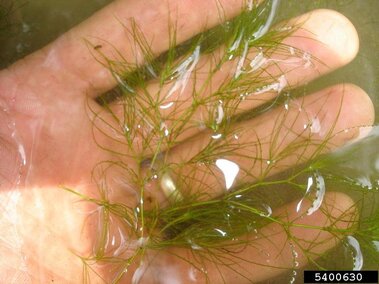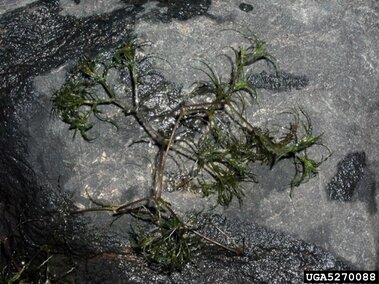General Information
Species Name: Najas minor
Also Known As: brittle waternymph, brittleleaf naiad, bushy naiad, slender naiad
Family: Hydrocharitaceae (Frogbit)
Growth Form: Forb (submersed aquatic)
Life Span: Annual
Flowering Dates: July-September
Origin: Europe, Asia, and Africa
Toxic: No
Category 2: Priority Aquatic Invasive Species
Why Is It Invasive?
Brittle naiad grows in dense patches, prohibiting boater and angler access. These dense patches restrict the growth of native aquatic plants and are not suitable habitat for native fish species. It has the ability to form such thick stands that it can cover or clog lakes or streams. It is extremely brittle, breaking into fragments easily that allow it to spread and reproduce.
What Does It Look Like?
General Characteristics
Brittle naiad is a rooted, submersed aquatic plant. It has a bushy appearance, branching stems, and its color varies from green to green-brown.
Flowers
Tiny, small green flowers appear in the intersection point between stems.
Leaves
Opposite, sometimes appearing whorled; stiff, curled, with spines along edges and pointed at the tip.
Stems
Highly branched near the tip; medium green when young, becoming dark green and brittle with age; submersed. Can grow 4-7.75 inches long and 0.04 inches thick.
Seeds
Spindle-shaped, purple-colored, 0.05-0.1 inches long.
Photos
Where Does It Grow?
Calm waters of ponds, reservoirs, streams, and lakes typically 2-15 feet deep, but can occur in waterbodies up to 4 meters deep.
How Does It Spread?
It primarily reproduces through seeds. The plant is extremely brittle, which allows it to fragment easily. It can reproduce from stem fragments or from small seeds which grow along its stem. Seeds and plant fragments can be spread to other waterbodies by waterfowl, hitchhiking on boats/trailers, or via river channels.
How Do I Control It?
Management of invasive aquatic plants involving either mechanical removal of plants or application of herbicides to public waters requires a permit. Contact the Contact the Nebraska Game and Parks Commission for more information.
Mechanical
Cutting or pulling the plant by hand or with equipment such as rakes or cutting blades could break it into fragments, allowing it to further spread. Contact the Nebraska Game and Parks Commission to determine appropriate removal methods.
Cultural
CLEAN your watercraft, trailer, angling gear and other equipment. Remove all aquatic vegetation and animal species from your equipment.
DRAIN your watercraft at the ramp by removing the boat plug and draining all live wells and ballast tanks.
DRY your watercraft, trailer and other equipment for at least 7 days before visiting another waterbody.
Chemical
Application of chemicals to public waters requires a permit. Contact the Contact the Nebraska Game and Parks Commission for more information.
What Should I Do If I See It in Nebraska?
If you see brittle naiad in Nebraska, you should report it to the Nebraska Game and Parks Commission's Aquatic Invasive Species (AIS) Program using their AIS Report Form. For guidance on what information to include in your report, check out our reporting tips.
References and More Information
Center for Invasive Species and Ecosystem Health
Finger Lakes Partnership for Regional Invasive Species Management
Golden Sands Resource Conservation & Development Council, Inc.
Minnesota Department of Natural Resources
Nebraska Weed Control Association
Nebraska Game and Parks Commission
Stubbendieck, J., Coffin, M., & Dunn, C. (2019). Weeds of the Great Plains. Nebraska Department of Agriculture.
